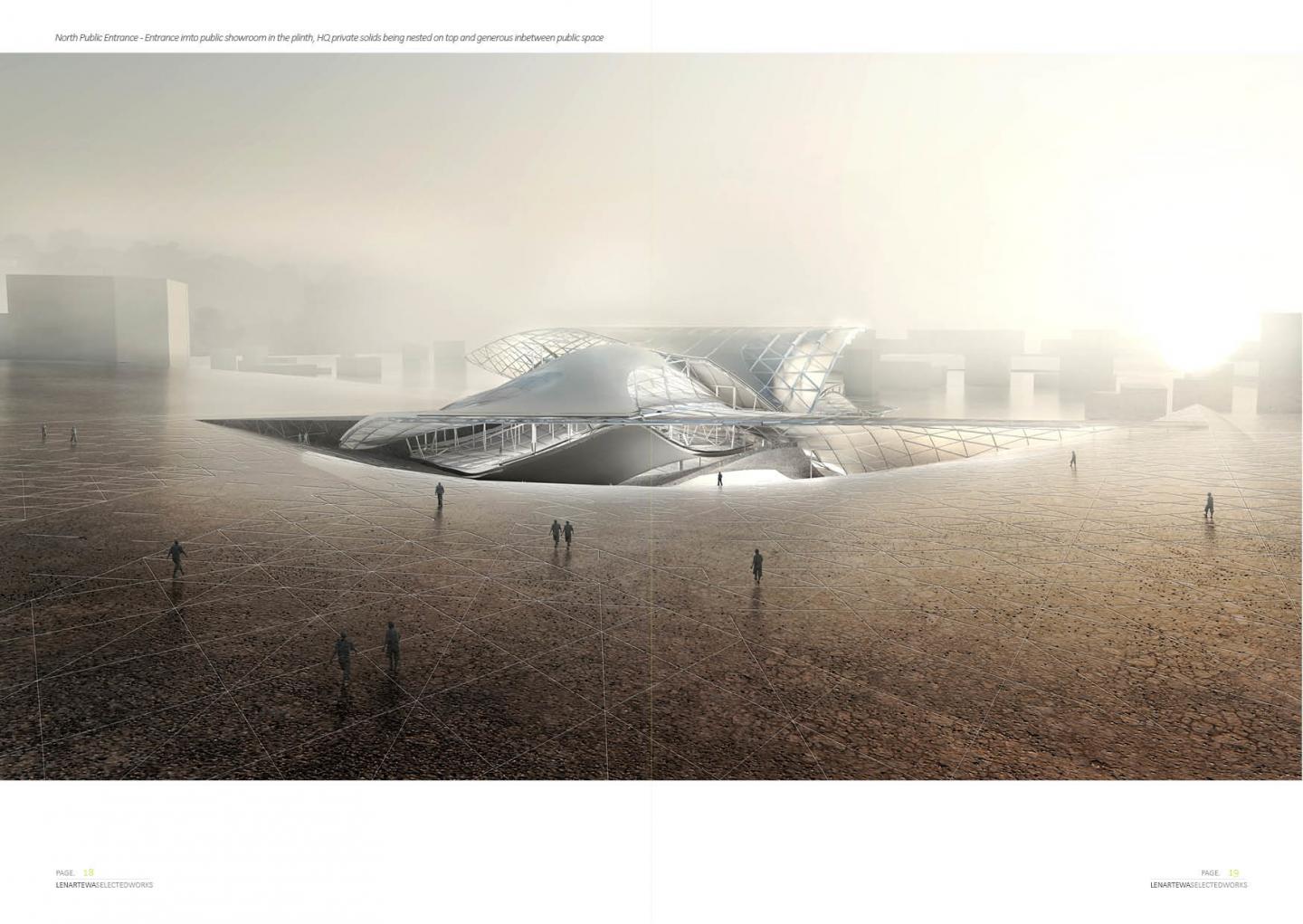Nothing of me is original.
I am the combined effort of everyone I’ve ever known.
― Chuck Palahniuk
Tectonic creolisation investigates a post-colonial african
metropolis condition, proposing an institutional building in
Addis Ababa, capital of Ethiopia, which integrates civic life
with highly political organisation.
New power seeks a new symbol.
My research is based on the booming economy
(Integrated African Commercial Block TFTA) and growing
need to host several new institional services which gives
a great opportunity for the future of african cities, to
develope tangible identity, internal city brand, which will
generate the contemporary paradigms.
Aesthetic Conflict, geometric isolation
Creolisation is a new cultural unity evolving from
the blending of diverse original elements.
My interest comes from combination of two
organisational methods, provided for two audiences.
The zones are formally divided by tectonic blanket,
which supports two different conditions however
does not allow them to intercross. First condition
serves as a headquarter for TFTA (a newly signed
agreement between 26 african nations to create a
free trade zone). The second condition is a space
open to public, which is a result of variations of the
repetitive tectonic blanket derrived from on and off
beat african composition.* This strategy allows to
create an eleborate plinth-roof relation, allowing to
emerge diverse sheltered spaces, which are so desirable in the city life.
African metropolis as a scaled up rural scene - notion
of traditional african compound, suqs and occupying
urban negative space.
* The coherence of african composition derrived from conflicting and
irreducible thytmic patterns, leaving aside the most critical feature of
all, imporovisation and variation element does not stand alone - each
element determines how do we apprehend another - almost any two
elemets can create a composition together. It is about the organisaiton
of rhytms and cross-rhytmic tensions and their periodic contraction
and composiiton into coherent, dynamically stable ensembles.*
2016
0000
www.ewalenart.com
Ewa Lenart - Master Thesis
University of Applied Arts Vienna
Studio Hani Rashid












